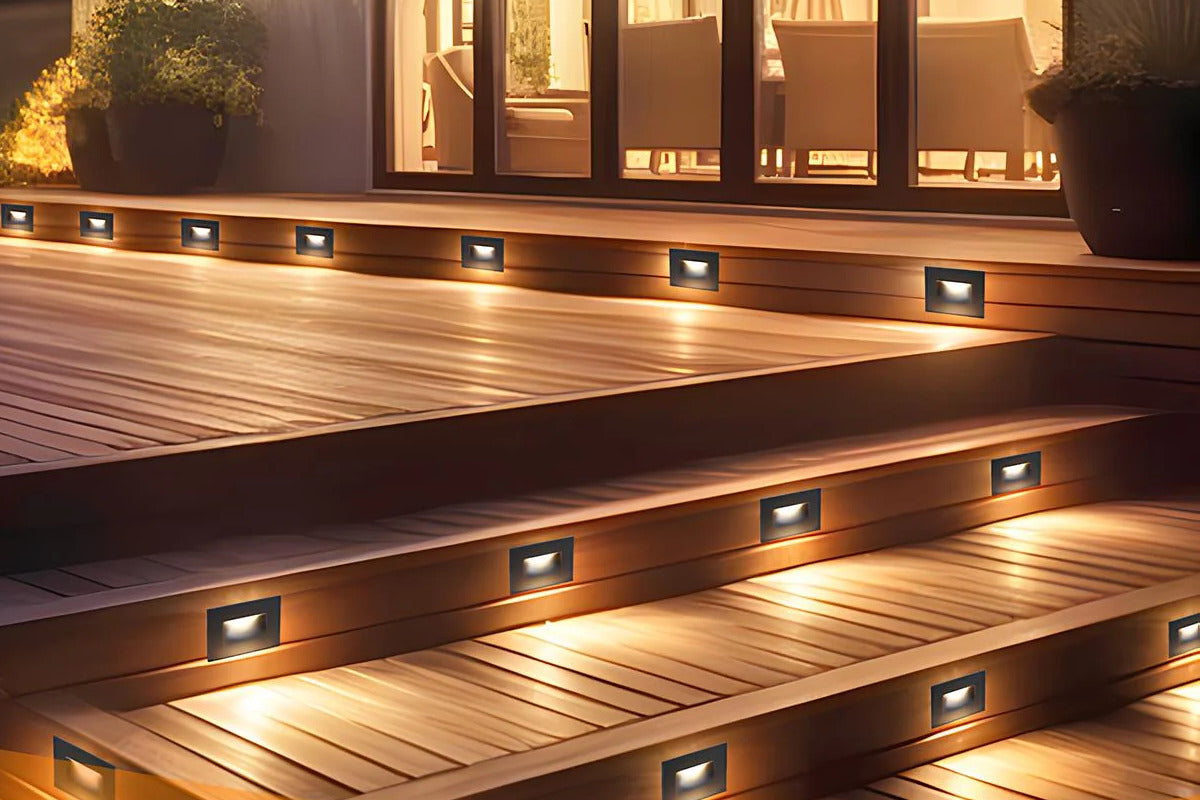Whether it's on indoor staircases or outdoor pathways, step lights serve a purpose beyond just illuminating the way. They not only provide safety lighting but also add a unique ambiance and aesthetic appeal to the space. However, the question of step light spacing is often overlooked, and it is, in fact, crucial for ensuring both safety and an overall pleasing appearance. In this article, we will delve into the significance of step light spacing and how to find the optimal solution that strikes a balance between aesthetics and functionality.
TABLE OF CONTENTS
- Factors Influencing Ideal Distance
- Balancing Aesthetics and Functionality
- Step-by-Step Guide on Determining Optimal Spacing
- Common Mistakes to Avoid
- Tips for Installation and Maintenance
- Conclusion

Factors Influencing Ideal Distance
When determining the optimal distance between step lights, several factors come into play. Firstly, the brightness and coverage area of the lights will directly impact the illumination on each step. Secondly, the width of the staircase or pathway is a crucial factor in deciding the number of lights needed and their spacing. Additionally, ambient light conditions must be taken into consideration to ensure proper illumination in situations with dim natural light. By delving into these factors, you'll be able to formulate the most suitable step light spacing solution for your space.
Balancing Aesthetics and Functionality
When installing step lights, striking a balance between aesthetics and functionality is crucial. Aesthetics go beyond mere appearance; they involve how the lighting design integrates with the overall space. To achieve this balance, consider creating visual focal points in the lighting layout, making step lights not only functional illuminators but also decorative elements in the space. When selecting fixtures, in addition to functional requirements, consider their appearance and design to ensure harmony with the surrounding environment and overall decor.
Step-by-Step Guide on Determining Optimal Spacing
To assist readers in accurately calculating the ideal spacing for step lights, we provide the following step-by-step guide:
- Measure Staircase Length: Use measuring tools to accurately measure the total length of the staircase or pathway.
- Consider Stair Width: Take into account the width of each step or the entire pathway, influencing the number of lights needed and their spacing.
- Calculate Total Lights: Divide the staircase length by the desired spacing to determine the total number of lights needed.
- Adjust for Corners: If the staircase has corners or turns, adjust the spacing of lights to ensure consistent illumination around bends.
By following these steps, you'll be able to pinpoint the optimal spacing for step lights that suits your space precisely.

Common Mistakes to Avoid
When installing step lights, there are common mistakes to avoid to ensure optimal lighting performance and overall aesthetics. Here are some pieces of advice to help readers steer clear of these common mistakes:
- Overcrowding: Avoid installing lights too closely together to prevent a glaring effect.
- Under-illumination: Ensure the spacing does not result in certain areas of the staircase lacking sufficient illumination, compromising safety.
- Ignoring Corners: If the staircase has turns or corners, do not overlook these areas; ensure the lighting layout accommodates the turns.
- Neglecting Appearance: Consider the appearance of step lights, not just their functionality, to ensure they harmonize with the overall design style.
By avoiding these common mistakes, you'll ensure that the installation of step lights meets both functional requirements and excels aesthetically.

Tips for Installation and Maintenance
When it comes to installing and maintaining step lights, here are some practical tips to help readers tackle these tasks more effectively:
Installation Tips:- Test the Layout: Before final installation, test the lighting layout to ensure each step receives proper illumination.
- Optimal Height: Ensure step lights are installed at an appropriate height to avoid glare and ensure uniform illumination.
- Directional Adjustment: Adjust the direction of the lights to shine downward, ensuring the light is focused on the steps rather than directly into people's eyes.
- Regular Cleaning: Regularly clean the surface of step lights to ensure maximum light output.
- Check Power Source: If wired, periodically check for any damage to the power lines. If solar-powered, ensure the solar panels are clean and unobstructed.
By following these tips, you can ensure the proper installation and ongoing maintenance of step lights, maintaining their optimal performance.

Conclusion
In this blog, we delved into the importance of step light spacing and explored how to find the optimal balance between aesthetics and functionality. By understanding the factors influencing the ideal distance, we hope readers can make more informed decisions when installing step lights. The step-by-step guide provides a practical tool for readers to calculate the ideal spacing, while advice on avoiding common mistakes will help them steer clear of unnecessary issues when arranging the lights.
In terms of installation and maintenance, we offered tips to ensure step lights maintain optimal performance post-installation. Testing the layout, optimal height placement, and regular cleaning are all crucial steps in ensuring the lighting system functions smoothly.
In conclusion, by taking a thoughtful approach to the selection, installation, and maintenance of step lights, readers will be able to create an outdoor space that is not only safe but also aesthetically pleasing and fully functional.




Share:
Turning Off the Motion Sensor for Ceiling Light
How to Install a Smart Light Switch